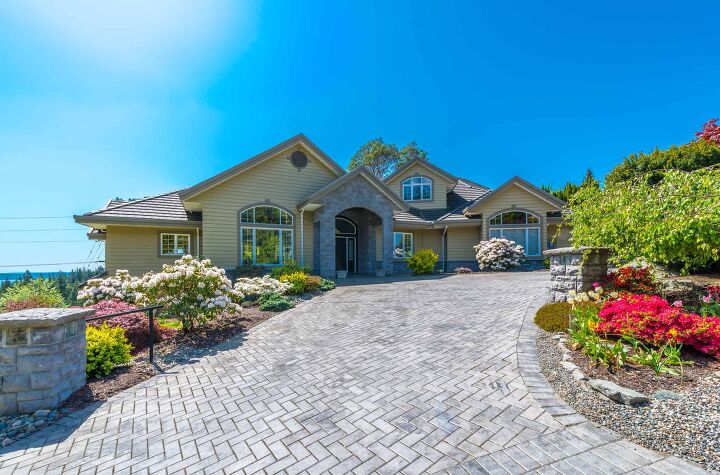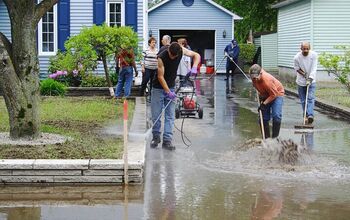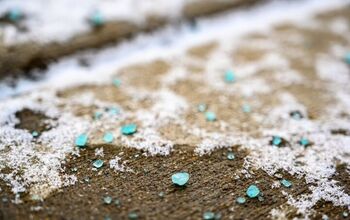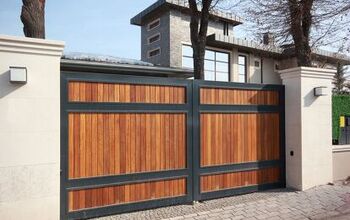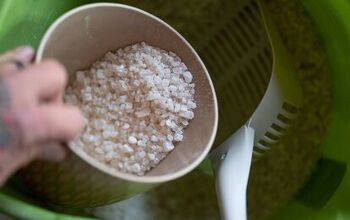How To Make A Steep Driveway Less Steep

It can be nerve-wracking to drive on a steep driveway, and it can be a nightmare for your bumper. Steep driveways can be visually appealing and evoke classic imagery, but they aren’t practical for your car. So, how can you make your driveway less steep?
You can less you’re your driveway’s incline if you add gravel to it or add speed bumps at the incline. Level the steepness and curvature in your driveway or add curves so that your car isn’t at a sharp angle the whole time. Put in a gap ramp or place barriers along the driveway to make the steep drive easier.
You can increase your home value by up to 5% if you fix and expand a steep driveway. Not only are steep driveways dangerous, but they are unappealing to prospective buyers on the market. Follow along as we explore what you can do to make your steep driveway less steep.
Do You Need Gravel and Loose Paving Installation or Repair?
Get free, zero-commitment quotes from pro contractors near you.

What Are The Risks of Having a Steep Driveway?
The biggest risk of having a steep driveway is having damage happen to your car as a result of having the bottom scrape across the pavement. However, if you’re in a colder environment, a steep driveway can also lead to your car sliding down the driveway as a result of ice. This can lead to car accidents or prolonged damage.
A steep driveway can become a liability for homeowners, especially if they let friends park their cars in their driveways. If a person damages their car due to a steep incline in your driveway and goes so far as to call their insurance provider about it, their insurance company might hold you liable. This, in turn, could raise your home insurance rates for years to come.
How Steep Should A Driveway Be?
Ideally, your driveway will be flat as a board. However, that’s not always feasible. Studies show that driveways should not have more than a 15 percent grade. In other words, your driveway shouldn’t have an incline that’s higher than 15 feet for every 100 feet of length. Any higher can potentially cause damage to cars and turn your driveway into a slipping hazard.
Fixing A Steep Driveway
Steep Driveway Solutions
It is scary to drive on a steep driveway, but luckily, there are several solutions. Some solutions such as leveling your driveway are expensive, whereas others are as simple as adding a cheap gap ramp. Let’s take a look at the best steep driveway solutions.
Add Gravel to Your Driveway
One of the easiest ways to even out your steep driveway is to add gravel to it. Many homeowners avoid gravel because it is harsh on tires and isn’t always great to look at. However, a layer of gravel can build up your driveway and even it out at steep and low points.
You may potentially need to remove the existing pavement or driveway material before you add gravel. It is worth the trouble to add gravel to your driveway if it is too steep and difficult to drive on. Luckily, gravel is more cost-effective than other materials such as pebble or stone pavers.
Gravel costs an average of $1.52 per square foot before labor, and it is one of the cheapest driveway materials. You can expect to spend $1,500 or less to add gravel to your steep driveway. It is worth the cost because your driveway will be less steep.
Put in Speed Bumps
Install speed bumps to help mellow your steep driveway and make it safer. It is uncomfortable to drive on a steep incline or decline, and speed bumps can help ease your mind. You can also minimize the risk of car crashes or problems for other drivers who enter your driveway when you install speed bumps.
Speed bumps are expensive, but it is worth the investment if you want to avoid bumper damage. You can expect to spend $2,500 per speed bump on average, but it is more cost-effective than redoing your driveway in many cases. Concrete speed bumps are the gold standard, but you can save money with an asphalt speed bump.
Put Curves In
While it can be expensive, you can make your steep driveway more comfortable if you put curves in. The curves don’t flatten the steep hill, but they can make it easier on your car. Curves can help break up the steepness so that your car doesn’t look straight up or down when you drive.
You can increase your property value by 5% on average if you increase the size of your driveway with curves. Curved driveways also provide extra curb appeal that is useful when you sell the house. Subtle curves can make it easier to climb or descend your driveway, and your front bumper will thank you.
Level Steepness and Curvature
Sometimes, the only solution to a steep driveway is to level it. It can be expensive to level a driveway, and it costs an average of $4.50 per square foot. Homeowners spend $1,000 on average to level a steep concrete driveway after labor costs. However, it is worth the cost to level a steep driveway if you can make it more comfortable, and it can even add value to your home.
It can cost over $2,500 if you have to regrade and level a large driveway. In some cases, you will need to redo a large portion of the driveway when you level part of it. You can expect to spend another $1,100 or more if you need to excavate.
Gap Ramp
The most simple way to reduce the steepness in your driveway is to use a gap ramp. Gap ramps cost an average of $150, but you could spend as little as $50 for a rubber gap ramp. Concrete and wood gap ramps are the most expensive option and cost up to $250.
You can fortify a gap ramp with concrete so that it can handle heavy traffic and stay in place. Premade gap ramps are effective and affordable, but you can also build one out of concrete. Consult a city planner before you install a gap ramp because some municipalities have specific rules about them.
Add Barriers
Adding a barrier doesn’t reduce the steepness of your driveway, but it can make it more manageable. Barriers can serve to give you peace of mind and make it more your driveway safer. You can find construction quality driveway barriers for $350 or less, and they’re worth the cost.
Place barriers along your driveway at its most steep and uncomfortable spaces. It can be expensive if you have to use multiple barriers along a long driveway. Pick and choose the most problematic areas of your driveway so that you don’t spend a fortune on barriers.
You can also get decorative and build small walls or use planters as a barrier. That way, you can make your driveway more visually appealing and make the steepness more manageable.
How Much Does It Cost To Repair A Steep Driveway?
If you decide to repair or address your driveway’s incline, you should expect to pay at least a couple hundred dollars. However, the exact price you’ll pay depends on the solution that you choose. Here’s what to know:
- A regular ramp or speed bump will cost between $150 to $600. This is on the low end and assumes that you will be the one doing the work.
- Regrading your driveway will cost between $400 and $5,200. The low end involves doing a DIY job, while the high end will involve having a professional team of people installing a customized driveway with an elegant finish.
- Just getting your driveway leveled will cost an average of $900. This is a lot like regrading, but slightly less involved.
Do You Need Gravel and Loose Paving Installation or Repair? Get free, zero-commitment quotes from pro contractors near you: FIND LOCAL CONTRACTORS.
Related Questions
What is the best material for a steep driveway to be made of?
If you’re not going to go with a gravel driveway, then the best options that you can choose is asphalt. Asphalt is durable, won’t rot away like concrete, and has a texture that offers a decent amount of grip compared to others. In recent years, some homeowners have also been able to get great results by using a rubber-based pavement surface.
How do you prevent erosion on a steep driveway?
Steep driveways are prone to erosion of all types, but thankfully, much of the erosion you may face can be prevented. The best way to avoid erosion is to keep your driveway well-maintained by raking away any leaves on it and keeping it clean. If you notice dents or chips in your driveway, make sure to patch them up using high-quality asphalt.
What is the maximum grade that is allowed on a steep driveway?
The steepest a driveway is legally allowed to be is a 25 percent incline. Any higher is considered to be a serious danger to cars on the street as well as cars belonging to the homeowner. Many local building codes also ban driveways at this grade, simply because of the danger it can pose.
How do you park on a steep driveway?
Drive your car up the driveway, press on the brake, and roll into park. Then, grab your emergency brake and pull it upwards, locking the car in place. You might feel a little jolt, but your car will stay parked as long as the brake works.
Related Guides

Ossiana Tepfenhart is an expert writer, focusing on interior design and general home tips. Writing is her life, and it's what she does best. Her interests include art and real estate investments.
More by Ossiana Tepfenhart



